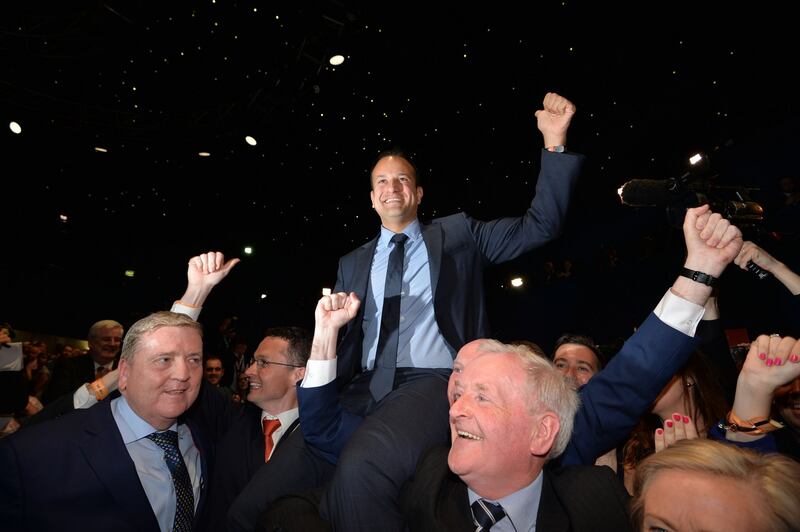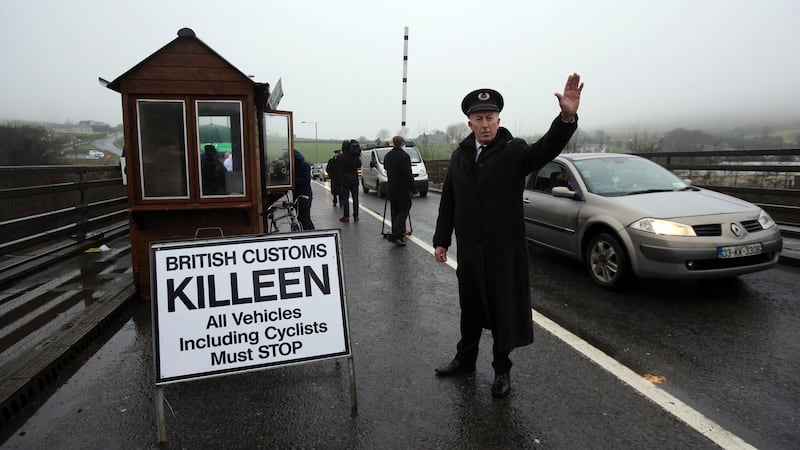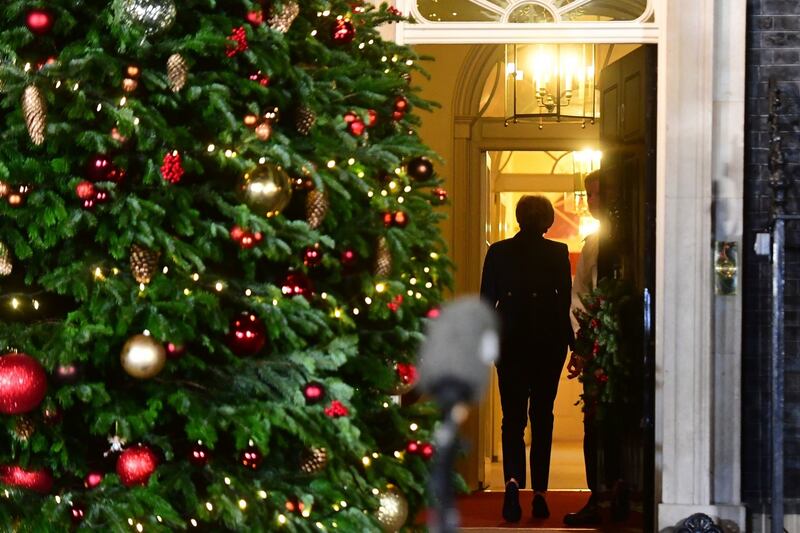Before we declare a Christmas truce in the Brexit wars, let's clear away one large piece of debris. In Britain, and even in Ireland, a narrative has taken hold: the Border problem was not a big issue until Leo Varadkar replaced Enda Kenny as Taoiseach in June 2017.
The issue would all have been settled amicably if a callow new administration had not come to power in Dublin. Varadkar was insecure, looking over his shoulder at Sinn Féin and determined not to be outflanked.
So the Irish became unreasonable, egged the EU on to take a hard line and created the backstop.
They were too successful for their own good – the backstop has made an acceptable deal impossible. There will be no deal and it will all be Ireland’s fault.
This narrative – popular among the Brexiteers, in the DUP, in the Tory Party, and in the right-wing press – feeds the larger story that nothing that has happened is their fault. It takes the self-pity that is at the heart of the Brexit project a stage further: bad enough being tyrannised by the Germans, but poor little England is now being bullied by the Irish.
Nicholas Watt, political editor of BBC's Newsnight wrote recently of a conversation with a Tory grandee who told him: "We simply cannot allow the Irish to treat us like this . . . The Irish really should know their place."
This kind of language brings out the worst in us all, so let’s try to be keep this civil and factual.

Priorities
First, a little chronology. Leo Varadkar became Taoiseach on June 14th, 2017. Was the Border question a crucial issue before then? Yes, it was.
Almost five months earlier, on January 17th, Theresa May made her now infamous speech on Brexit at Lancaster House, in which she told the Brexit ultras everything they wanted to hear. They agree with every word of it and want her to return to it.
And in this speech, May said: “Nobody wants to return to the borders of the past, so we will make it a priority to deliver a practical solution as soon as we can.”
So, of course, the Anglo-Irish mood music was good at this stage because here was the British prime minister saying clearly that she was prioritising a “practical solution” to the Border question and that it would be delivered soon.
Also while Kenny was still in charge, another big thing happened. On April 29th, 2017, a month after May triggered the Article 50 process for leaving the Union, the EU issued its riding instructions to its chief negotiator, Michel Barnier.
The British have to date not produced a single credible proposal for how they intend both to leave the customs union and avoid any Border infrastructure
The instructions were clear on the centrality of the Border question to the withdrawal talks: “Continuing to support and protect the achievements, benefits and commitments of the Peace Process will remain of paramount importance. In view of the unique circumstances on the island of Ireland, flexible and imaginative solutions will be required, including with the aim of avoiding a hard border . . . ”
So both sides knew and accepted by the end of April 2017 that the Border question was “a priority” and of “paramount importance”. And both sides fully understood that dealing with the Border in the context of the peace process meant one thing above all: no physical infrastructure.
No proposals
Don’t take my word for this. Here is Theresa May in Florence in September 2017, in another speech that had the full backing of the Brexit ultras: “We and the EU. . . have both stated explicitly that we will not accept any physical infrastructure at the Border. We owe it to the people of Northern Ireland – and indeed to everyone on the island of Ireland – to see through these commitments.”
So what actually happened after June 2017? It was not the change of government in Dublin that suddenly made the Border question central to the withdrawal process. What really happened is something much less dramatic: nothing.
May had said that her government owed it to everyone on the island to see through the commitments she (and her government, including Boris Johnson and David Davis) had made to "everyone on the island of Ireland".
But the British did damn all. Again, don’t trust my interpretation on this.
The House of Commons all-party committee on Brexit noted just two weeks ago: “In December 2017, we said that we did not see how it would be possible to reconcile maintaining an open border on the island of Ireland with leaving the Single Market and Customs Union . . . Since then, we have seen no realistic, long-term proposals from the Government that would address this.”
But it is not just that the British didn’t follow through on their commitment to produce a “practical solution” in 2017. They didn’t even try. The staggering fact is that even though they knew that the Border was the key to Brexit, they left it out of their Brexit planning.
It simply didn't matter who was in power in Dublin
In November 2017, the Public Accounts Committee at Westminster asked the woman charged with planning for Britain's post-Brexit borders, Karen Wheeler: "Obviously, we have the situation of Northern Ireland and the land border there; we have 300 crossing points where people and goods can freely move. From your point of view, in your team's planning, what are the specific challenges associated with planning for these changes between the UK and southern Ireland?"
Her reply was breathtaking: “I am not really able to say. That area is not within the scope that we in the border planning group have been working on.”

No change
In its report the following month, the PAC noted dryly that, “Some incredibly important issues have not yet even been considered by the [border planning] group; for example arrangements for the 300 crossing points across the land border in Ireland are currently outside the scope of the group.”
And this never really changed: the British have to date not produced a single credible proposal for how they intend both to leave the customs union and avoid any Border infrastructure in Ireland.
The only logical conclusion is that the British don’t in fact believe that there is a technological solution. For if they did, why would they worry about the backstop?
If the problem can be made to go away by the use of ingenious technology, then the backstop will never be used.
Conversely, if you’re so worried about the backstop being activated, it can only be because you don’t believe your own high-tech “solutions”.
So how could any Irish government of any hue simply take it on trust that the British would keep the commitments they had so freely given?
It simply didn’t matter who was in power in Dublin.
If the British either would not or could not come up with credible proposals to deal with what they knew to be the single biggest obstacle to Brexit, there were only two things any Irish government could do. It could ask for a legally binding assurance.
Or it could “know its place” and shut up about its own vital national interests.















